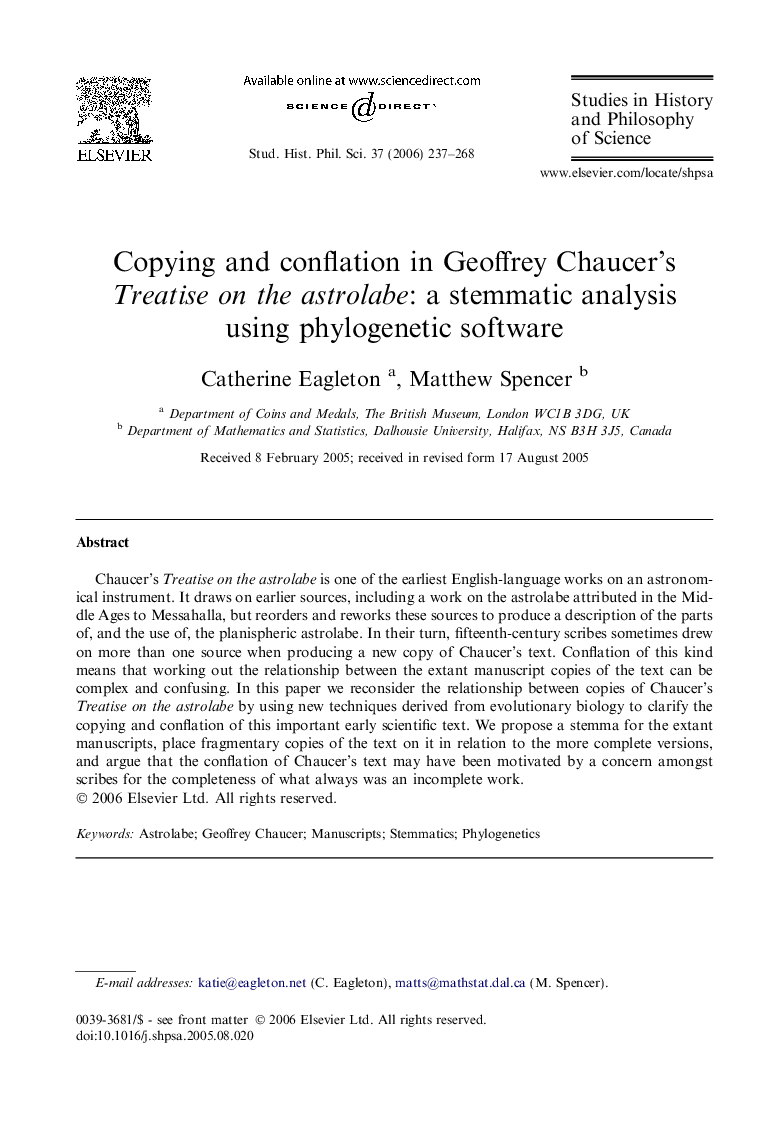| Article ID | Journal | Published Year | Pages | File Type |
|---|---|---|---|---|
| 1160607 | Studies in History and Philosophy of Science Part A | 2006 | 32 Pages |
Chaucer’s Treatise on the astrolabe is one of the earliest English-language works on an astronomical instrument. It draws on earlier sources, including a work on the astrolabe attributed in the Middle Ages to Messahalla, but reorders and reworks these sources to produce a description of the parts of, and the use of, the planispheric astrolabe. In their turn, fifteenth-century scribes sometimes drew on more than one source when producing a new copy of Chaucer’s text. Conflation of this kind means that working out the relationship between the extant manuscript copies of the text can be complex and confusing. In this paper we reconsider the relationship between copies of Chaucer’s Treatise on the astrolabe by using new techniques derived from evolutionary biology to clarify the copying and conflation of this important early scientific text. We propose a stemma for the extant manuscripts, place fragmentary copies of the text on it in relation to the more complete versions, and argue that the conflation of Chaucer’s text may have been motivated by a concern amongst scribes for the completeness of what always was an incomplete work.
